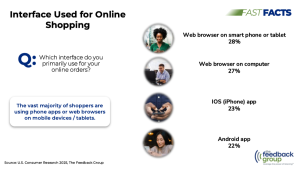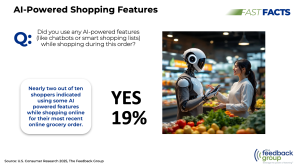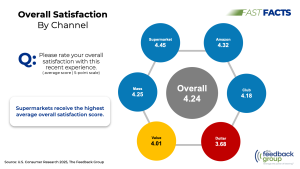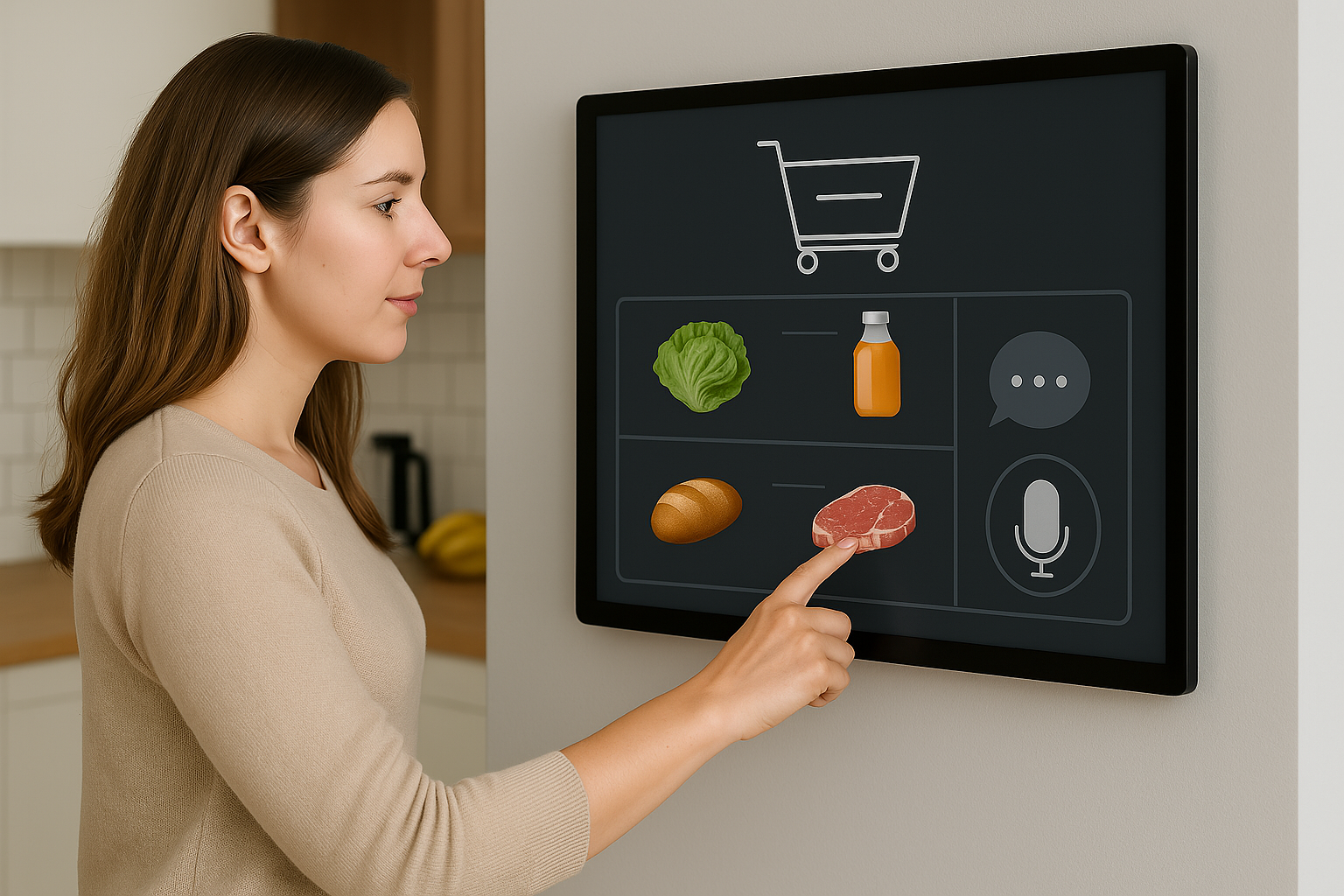The landscape of grocery shopping continues to evolve dramatically, driven by rapid advancements in digital technology and shifting consumer behavior. Today’s grocery retailers face an imperative: adapt quickly or risk losing relevance among increasingly digitally-savvy shoppers. At the heart of this evolution lies the grocery experience—a key word in today’s retail vernacular, underscored by consumer demands for convenience, personalization, and seamless integration of technology.
The Digital Shift in Grocery Shopping
 Online grocery shopping is no longer just a convenience—it has become a necessity for many shoppers as part of their shopper journey. According to recent consumer research about the online shopping experience by The Feedback Group, nearly eight out of ten consumers (79%) plan to maintain or increase their frequency of online grocery shopping in the coming year. Delivery, slightly favored over pickup (52%), and the frequent use of services like DoorDash, Instacart, and Shipt (48% of shoppers) highlight this ongoing shift.
Online grocery shopping is no longer just a convenience—it has become a necessity for many shoppers as part of their shopper journey. According to recent consumer research about the online shopping experience by The Feedback Group, nearly eight out of ten consumers (79%) plan to maintain or increase their frequency of online grocery shopping in the coming year. Delivery, slightly favored over pickup (52%), and the frequent use of services like DoorDash, Instacart, and Shipt (48% of shoppers) highlight this ongoing shift.
Additionally, the majority of online grocery shoppers (73%) utilize mobile web browsers or dedicated apps, clearly signaling supermarkets to optimize their digital interfaces for mobile-first experiences.
Enhancing the Online Grocery Experience through AI

Artificial intelligence (AI) has already started reshaping the grocery landscape. The Feedback Group’s research reveals that nearly one in five online grocery shoppers (19%) currently use AI-powered features, including chatbots and smart shopping lists. Moreover, the power of personalized product recommendations is clear, with seven out of ten shoppers agreeing these recommendations are highly relevant to their needs.
AI presents tremendous opportunities for supermarkets. For instance, sophisticated AI-driven analytics could significantly enhance inventory management, reducing common frustrations related to out-of-stock items—an issue still faced by about 30% of online shoppers who reported not receiving all ordered items. Furthermore, AI-enabled personalization strategies can boost customer loyalty by accurately predicting individual preferences and buying patterns.
Voice Technology—The Next Frontier
 Another transformative digital innovation on the horizon is voice-command technology. With nearly half (46%) of consumers indicating a willingness to use voice commands to add items to their online shopping carts, supermarkets have an exciting new avenue to enhance customer convenience and engagement. Voice technology could simplify online grocery shopping, appealing especially to multitasking shoppers and potentially leading to increased order frequency and basket sizes.
Another transformative digital innovation on the horizon is voice-command technology. With nearly half (46%) of consumers indicating a willingness to use voice commands to add items to their online shopping carts, supermarkets have an exciting new avenue to enhance customer convenience and engagement. Voice technology could simplify online grocery shopping, appealing especially to multitasking shoppers and potentially leading to increased order frequency and basket sizes.
Integrating voice technology requires thoughtful implementation. Considerations around user-friendly interactions, accurate product selection, and integration with existing digital platforms will be critical. Supermarkets proactive in addressing these factors will likely secure a competitive advantage.
Digital Innovations and Shopper Satisfaction
Digital innovations don’t merely add convenience; they significantly impact customer satisfaction. Supermarkets currently outperform other retail channels in overall online grocery shopping satisfaction, with an impressive rating of 4.45 out of 5. They excel in essential touchpoints such as ease of cart management, seamless checkout processes, and convenient pickup or delivery times.
However, despite supermarkets’ overall high performance, areas like the visibility of fresh produce quality (rating 3.39 out of 5) indicate opportunities for further innovation. Enhancing transparency about product freshness digitally could close satisfaction gaps, fostering greater consumer trust and loyalty.

Sustainability and Speed—Additional Digital Considerations
Sustainability remains a significant consideration for today’s consumers, with one in four shoppers viewing sustainable or recyclable packaging as highly important for their online grocery orders. Supermarkets can digitally address sustainability concerns through clear labeling and information online, thus satisfying consumer desires for environmentally responsible practices.
Moreover, nearly half (44%) of consumers express willingness to pay for guaranteed two-hour delivery, underscoring the rising demand for rapid service. Digitally optimized logistics solutions, real-time inventory tracking, and intelligent delivery routing systems can enable supermarkets to meet these expectations efficiently.
Conclusion: Digital Innovations—A Competitive Imperative
The grocery experience today is undeniably digital, characterized by growing consumer expectations for convenience, personalization, and technological integration. Supermarkets willing to embrace AI, voice technology, sustainability, and speedy delivery innovations will solidify customer loyalty, enhance satisfaction, and position themselves strongly against competitors.
Now is the time for proactive supermarkets to innovate strategically, aligning their practices with consumer expectations.
Take the Next Step: Evaluate Your Shoppers’ Grocery Experience
The Feedback Group helps grocery retailers listen deeply to their shoppers, turning insights into impactful actions. To explore more detailed findings from our 2025 Online Food Shopping Experience Study or to conduct your own consumer study, contact The Feedback Group or request your copy of the full report today.

